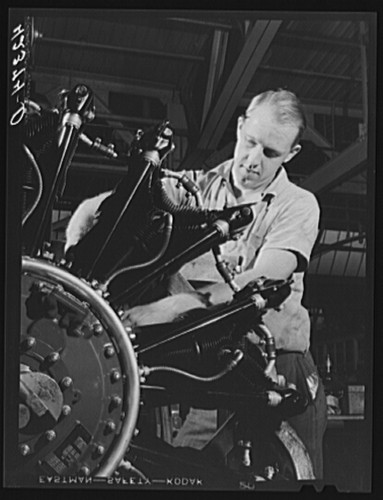On December 24, 1925, aviation engineer and head of the Pratt & Whitney Aircraft Company Frederick B. Rentschler debuted its first product: the Wasp engine. It featured a radial design, so named because the engine’s cylinders emerged from a hub like the spokes on a wheel. This configuration made it possible to use air flow to prevent engine overheating.
Air-cooled engines held appeal because they provided more power but weighed less than liquid-cooled models. Air-cooled engines also proved more reliable. They did not need the radiators, hoses, water pumps, and other components that not only added weight but also resulted in leaks and other malfunctions common to liquid-cooled engines. With these advantages in mind, the US Navy supported the development of radial engines in hopes of developing a new generation of fighter planes for its aircraft carriers.
Record-setting Design
Additional design innovations by Rentschler’s team resulted in a radial, air-cooled engine that produced 425 horsepower and weighed only 650 pounds. Rentschler’s wife is credited with naming the engine. The Navy ordered 200 engines, and soon, Wasp-powered planes earned a reputation for superior speed, rate of climb, performance at altitude, and reliability. As a result, commercial aircraft manufacturers also started using Wasp and other Pratt & Whitney engines. Among those setting records with Wasp-powered planes were Charles Lindbergh and Amelia Earhart.









